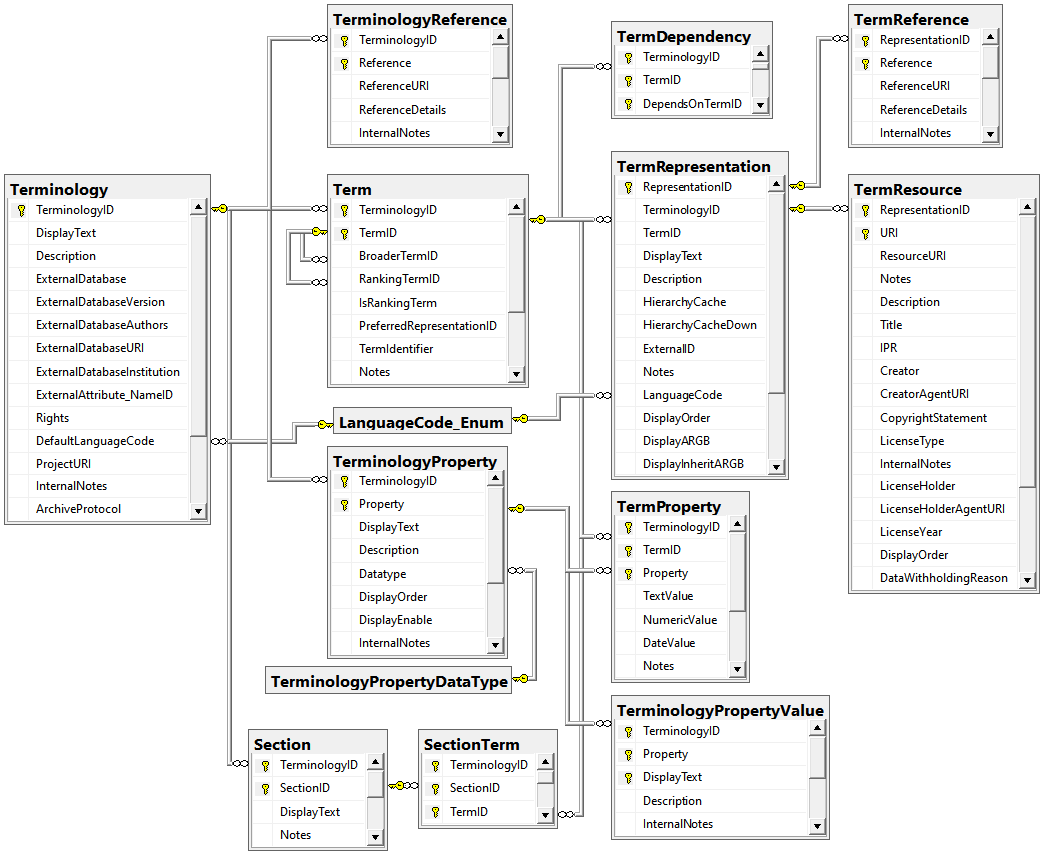DiversityScientificTermsModel v1.0.15
From Diversity Workbench
Revision as of 11:33, 19 October 2023 by Anton Link (Talk | contribs) (Created page with "=DiversityScientificTerms Information Model (version 1.0.15, 19 October 2023)= {|border=1 cellpadding="5" style="margin:1em 1em 1em 0; background:#FFFFFF;border:1px #AAA solid...")
Contents
DiversityScientificTerms Information Model (version 1.0.15, 19 October 2023)
| Authors | M. Weiss, G. Hagedorn & D. Triebel 2023 |
| License | 
|
| Suggested citation | M. Weiss, G. Hagedorn & D. Triebel (2023). DiversityScientificTerms information model (version 1.0.15). http://www.diversityworkbench.net/Portal/DiversityScientificTerms_v1.0.15 |
| Notes | The models currently reside in MS SQL Server, so knowledge of some SQL Server ER-diagram conventions will be helpful.
Besides the screen shots below, a Microsoft T-SQL-Script for the generation of the tables is provided. |
dwbST Database Scheme
This information model is available as dwbST database scheme with each single data table and data column referenced as term or concept by its own stable and persistent URL.
ER Diagrams
Overview over all entities and relations used in the database model
Some “housekeeping” fields and tables for the documentation when and by whom the data were inserted or changed are not shown in the overview or the detail diagrams.
A short introduction:
- “Terminology” Represents the termiologies containing the scientific terms.
- “Term” Represents the scientific term with its relation to other terms.
- “TermRepresentation” keeps the representations of the terms in different languages.
Entities ending with “_Enum” (“LanguageCode_Enum” etc.) contain enumerated values or strings.
